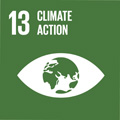- Docente: Maria Rosa Guerrieri
- Credits: 6
- SSD: AGR/05
- Language: Italian
- Teaching Mode: Traditional lectures
- Campus: Bologna
- Corso: First cycle degree programme (L) in Land and Agro-Forestry Technologies (cod. 5831)
-
from Feb 19, 2025 to May 22, 2025
Learning outcomes
During this course students will: - learn about mechanisms underlying functioning and productivity of forest ecosystems; - gain the knowledge needed to describe a forest stand and its main features, so to improve its stability and functioning in relation to most updated regulation at the regional, national and European levels. Specifically, students will get familiar with main silvicultural approaches used in Italy and how they can be used to manage forest in a sustainable way to ensure the provision of multiple ecosystem services.
Course contents
Students should have adequate background knowledge in botanic, plant biology and diversity (with particular reference to tree species), ecology and soil chemistry.
Part 1. Forest ecology
- Tree, forest ecosystem and landscape: definition and main attributes.
- Forest types in relation to climate: how forests changed over time (with particular reference to post-glacial recolonisation), main biomes at the global scale, main vegetation belts in Italy and in Emilia Romagna.
- Forest stand growth dynamics.
- Forest productivity.
- Elements cycling in forest ecosystems (carbon, water and nitrogen cycling).
- Forests and ecosystem services provided.
- Climate and land-use changes.
- Forests in the Sustainable Development goals adopted by the United Nations Member States in 2015 and the European Green Deal and the Forest national strategy.
- Urban forest: definition and relevance to achieve SDGs
Part 2. Silviculture and forest management
- What's silviculture? Definition and goals.
- Main silvicultural systems: high forest.
- Thinning practices in high forest; Tree-oriented silviculture.
- Main silvicultural systems: coppice.
- Coppice conversion to high forest.
- Tree plantation for wood production.
- New challenges of silviculture: managing forests to increase adaptation and resilience to disturbances and global changes.
- Forest stand description and basics of dendrometry and tree measurements in the field.
Other activities: seminars will be organized aimed at exploring in more details some of the topics covered during the course. The seminars will be moments of active discussion between students and experts in the forestry sectors as well as researchers operating at the regional/national or international scale, with brainstorming on the topics covered. Moreover, a fieldwork will be organized to see example of forest management in the region and to train students on tree measurements.
Readings/Bibliography
Lecture slides and additional materials (such as scientific papers/ reports) will be shared through Virtuale.
Recommended Textbooks
Paci M. 2011. Ecologia forestale. Elementi di conoscenza dei sistemi forestali applicati alla selvicoltura
Piussi P., Alberti G. 2015. Selvicoltura generale. Boschi, società e tecniche colturali. Ed. Compagnia delle Foreste, Arezzo
Additional resources
Bernetti G 2005: Atlante di Selvicoltura. Ed. il Sole 24 Ore Edagricole, Bologna.
Del Favero R., Lingua E, Pividori M. 2019. Selvicoltura per la protezione dei disturbi. Compagnia delle Foreste S.r.l.
Ciancio O., Nocentini S. (2003). IL Bosco ceduo. Selvicoltura Assestamento Gestione. Accademia Italiana di Scienze Forestali (disponibile sul sito dell'Accademia Italiana di Scienze Forestali).
Teaching methods
The course combines lectures with power-point presentations (for the majority of the hours) and practical activities in the forest. There will be a series of seminars from forest management experts and forest ecology researchers on specific topics. The use of virtual platform (Wooclap) in the class and active discussion during seminars will foster critical thinking and interaction between students and professor (e.g., brainstorming and discussion on specific case studies).
Assessment methods
The final exam will include an oral presentation, a written test and a practical test.
Written test (40% of the total score): a questionnaire of 10 questions regarding part 2 of the programme (Silviculture and forest management).
Oral presentation (40% of the total score): the students will be divided in groups and will prepare a power-point presentation on one of the main topics included in the Forest ecology part.
Practical test (20% of the total score): a technical report on the activity carried out during fieldwork.
Fore more details, please get in touch with the professor.
Teaching tools
All the material will be shared through the Virtuale platform.
Office hours
See the website of Maria Rosa Guerrieri
SDGs




This teaching activity contributes to the achievement of the Sustainable Development Goals of the UN 2030 Agenda.
